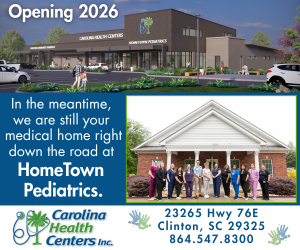USC Tourism Researcher Says Tourism Equals Economic Development in the Salkehatchie Region
June 22, 2009By Dr. Rich Harrill
When you think of South Carolina, think vacation, beaches and sunshine. But, for those born and bred, we know, there’s so much more. That is, more vacation getaways than meet the eye.
It is widely recognized that tourism equals economic development for South Carolina. However, it is not widely acknowledged that tourism can serve as a catalyst for other forms of economic development, such as retirement, real estate, health care, and technology.
That statement is true for all parts of the state, but increasingly more so for a section of the state known as the Salkehatchie Region which includes Allendale, Colleton, Bamberg, Barnwell, and Hampton counties.
These counties are beginning to see new growth moving inland from upscale coastal communities, as well as retirees from other states seeking great climate and affordable real estate. Tourism is a way to introduce these prospective residents and investors to the region—come as a visitor, stay as a resident.
As Director of the University of South Carolina’s International Tourism Research Institute and Alfred P. Sloan Travel & Tourism Industry Center, I and a team of researchers in Columbia and from the Salkehatchie Leadership Institute recently completed a comprehensive study showing local communities how to turn their individual tourist attractions into a business and economic development strategy.
Our objective is help economic developers and Chambers of Commerce develop a more strategic marketing plan emphasizing their respective attractions. For instance, we learned that the most lucrative and appealing tourism attractions in the Salkehatchie Region are camping, hunting, and history. However, our research also indicated that future market development will see the highest economic impact come from nature-based tourist attractions.
The plan will assist many hunting businesses in the region anticipating this shift, to start offering hiking, birding, and environmental education in addition to traditional hunts that will remain important to the region’s economy.
Day-trippers are the Salkehatchie region’s primary source of tourism revenue.
Many of these visitors come from Charleston, Savannah, Augusta, Columbia, and even Atlanta and Charlotte to name a few.
However, there are many other smaller communities in North Carolina, South Carolina, and Georgia with residents looking for what the Salkehatchie has to offer. Our findings also show that a significant number of them are also interested in camping, hunting and history, and would consider visiting these attractions, if they knew more about them and the Salkehatchie Region.
In conclusion, our study showed that tourism in this rural area could be worth as much as $48.3 million with proper investment, proving the state’s rural areas have the same qualities that attract visitors and residents to the state’s mountains and beaches.
The Salkehatchie tourism plan is just one example of USC’s commitment to homegrown tourism research, using one of the state’s leading industries to attract other forms of lucrative economic development.
A Strategic Tourism Plan for the Salkehatchie Region
Purpose
The purpose of this plan is to guide tourism marketing and development efforts in the Salkehatchie region through a comprehensive examination of existing and potential assets, attractions, markets, and products.
Overall Findings
- The approximate market size of the current tourism business in the Salkehatchie region is an estimated $28.8 million annually and provides 848 jobs.
- The most viable current tourism segment –interests in camping, hunting, and history. Future market development shows that the highest economic impact should accrue from nature-based tourists.
- Market segmentation shows that these segments have median household incomes ranging from $41,673 to $82,416, own motor homes, RVs, campers, tents, enjoy outdoor recreation, and identify with a rural lifestyle, including listening to country music and reading hunting magazines.
- Marketing efforts should focus on geographic markets within 3-to-4 hours driving distance of the Salkehatchie region.
- Develop retail and golf tourism—shopping and golf—two major draws—appeal to an upscale market quickly pushing into the Salkehatchie region from Charleston, Hilton Head, and Savannah.
- Encourage the arts and storytelling—narrative is an important part in telling the story of the region, its people, history, and culture, and products, assets, and attractions.
- Preserve small town historic districts—these districts are important to the region’s heritage tourism product, but also serve as a crucial reference point for visitors. Revitalizing historic districts and downtown is important to the region’s tourism development.
- Salkehatchie could become among the first rural tourism region to integrate wireless technology seamlessly into a natural environment.
- Create a coherent, distinctive brand—the counties of the Salkehatchie region should develop a coherent brand, one in which the brand name, promise, and logo accurately reflect the region’s market and products.
- Create a “Be a Tourist In Your Own Hometown” event or ambassador tour to familiarize residents with regional attractions outside their home county.
Top Economic Impact: Nature-Based Tourism
Nature-based tourism is defined as recreational activities that focus on nature in more pristine and remote locations. The Salkehatchie region possesses an abundance of such locations. Given a possible competitive advantage the region may have in nature-based activities, local officials should consider marketing and promoting the area’s land- and water-based resources to attract non-local visitors.
Average daily expenditures of nature-based tourists are $90.64. The majority of nature-based tourists’ expenditures are spent on food/beverages followed by lodging and auto, respectively. Total expenditures of nature-based tourists in the Salkehatchie region are approximately $4,532,000.
Nature-based tourists are estimated to generate a direct impact of $3,376,114, total output impact of $4,234,577, indirect business tax impact of $329,423, value added impact of $2,456,315, and employment impact of 87 jobs.
Dr. Rich Harrill is Director of USC’s International Tourism Research Institute and Alfred P. Sloan Travel & Tourism Industry Center. He is a native of Gaffney, South Carolina.
















